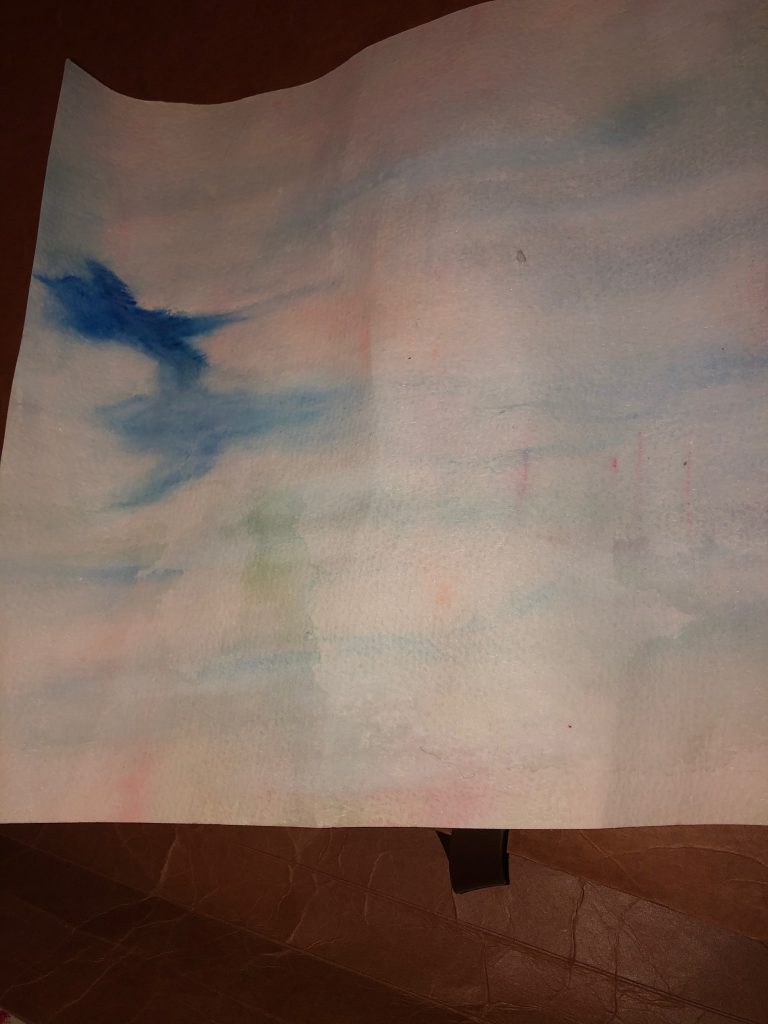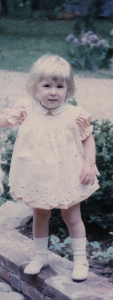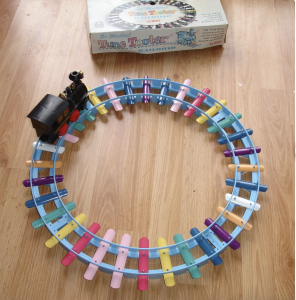Mirrors of Music
“What were you like, before it all began with your mother?”
“You know, we don’t need to go back over this. It’s in my previous therapist’s notes, the details of that first time.”
Dale, my latest therapist, smiles encouragingly at me.
“I’m not asking you to describe that, but rather to go back before it, to yourself as you once were.”
“Why is that relevant?”
“I’d like you to tell me more about how you used to sing.”
“It wasn’t singing like la-la-la. You can’t hear it on the outside. It’s…complicated”
“Indulge me, I’d like to hear you describe it. It’s an important aspect of yourself to understand, to celebrate and bring forward into the present.”
“Well… it’s like being in two places but not in either…I’m scared you are trying to trick me into reliving that first time. I don’t want to do flashbacks any more.”
“We aren’t going forward to that spot in time. Just what you remember about yourself before then.”
“You’ll think I’m crazy. You’ll want me to take meds.
“Sadie. You are neither crazy nor in need of meds. I truly believe that exploring your creative responses to what your mother did can help you reclaim yourself, your wholeness.”
“I hate this. I hate all of this cleaning up I have to do, still, of something that I didn’t deserve.”
“Understood, and duly noted. Now let’s get to it. What do you remember about who you were, how you were, before Mother began hurting you? Take a deep breath, and listen inside…it’s okay…”
Flying on the Wings of Sound
I was three, maybe four years old when my mother first molested me. The snippets of that memory begin with my recalling fidgeting on the counter of the blue bathroom at home. I was struggling against her hand moving over my hips. Lying face up on the long counter, my head was hanging over the sink basin to have my hair washed. I could feel the water level rising over my ears.
Mother’s hand nearly covered my face as she gently pushed my head downward into the sink, her other hand beginning to probe. Water splashed into my nose, then began to fill it. I began to panic at my powerlessness to stop either of her hands. Overhead, her face remained expressionless, mirroring nothing of my rising terror. Something suddenly snapped, deep within my mind.
A pop – or perhaps a click – and then silence. Part of me remained at her mercy, while the rest of me discovered that I could fly. The little girl being molested on the counter was no longer the real me.

“What do you remember about yourself back then, at such a young age, before it first happened?” Dale again prompts.
“It doesn’t matter. Mother killed my soul, that day in the bathroom,” I declared flatly
“No. It just went into hiding,” countered Dale. “Music became your connective thread between your inner and outer worlds”
“Because she never let on what she was doing to me.”
“She couldn’t. She was lost in her own past and couldn’t see you. But what do you see, though?”
“I see a blank face, like she’s looking right through me. She gave me absolutely nothing. I had to make up something myself and fill in the blanks.”
Dale smiles reassuringly, but I say nothing. I want to hear her make sense of it, or at least confirm that what I did makes sense to her.
“Yes, and that’s where you brought in the music of the trees, and made the mirror you needed.”
“A mirror. Can mirrors sound like music, then?”
“You’re living proof that they can, Sadie.”
Mirroring is crucial to healthy, normative child development. Children mirror the facial expressions and vocabulary of their parents and other caretakers in order to draw upon shared experiential knowledges and grow. Consider the effect of oppositional mirroring, then, in a situation like the above. It can be devastating. My mother’s blank face reflected nothing of my fear or confusion, neither that first time she molested me nor later during additional instances. She seemed to look right through me, her face offering no clue to what she was thinking. It seemed she wasn’t even aware I was there.
 To a violated child, a blank or oppositional expression negates wholly their experience. There is no shared knowledge for them to draw upon, no outward expression or vocabulary to emulate that would even acknowledge the occurrence of such an intrusive act.
To a violated child, a blank or oppositional expression negates wholly their experience. There is no shared knowledge for them to draw upon, no outward expression or vocabulary to emulate that would even acknowledge the occurrence of such an intrusive act.
The energy of the trauma, forcibly denied access to conscious existence, is absorbed into the recesses of flesh and spirit, dormant but never dead. As the abuse continued alongside its denial, each incident drove further into hiding the child who stretched out her arms to hum with the wind and swaying trees. I created an outer persona, a protective shield around the precious fragments of my soul’s inner singing spirit.
My mirror became musical sound that composed (literally) my self as I wished it to be. And no child wants to see themselves as anything but loved, safe, whole. Both my inner and outer worlds were filled with music, but inside were other sounds as well. The singing of the trees for sure, but also the soundscape of the land and its animals, energy. Also, sounds of stifled screams and my mother’s voice.
The music of my outer world immersed me in the sounds of church choir, piano lessons, school music class, National Public Radio broadcasts (Mother’s favorite channel on Saturday morning shopping errands), and the occasional concert in a nearby city. This rich variety provided a sonic canvas of expressive models.
If Music be the Food of …?
Whenever unwanted feelings loomed like a threat of overwhelming me, I sought to transplant them onto a musical landscape that mirrored what I needed to survive. In this manner, I cut myself off from engaging too deeply with fear, loneliness, and despair. Like the memories, I wanted to banish them to the periphery of my consciousness.
Music became my emotional food. Its ordered principles of pitch, rhythm, timbre, texture, and form directed my mind away from the chaos of traumas I was powerless to prevent or resist. Music became my surrogate human mirror, its non-verbal communication conveniently masking my deficit of vocabulary to describe what was happening to me at my mother’s hands. The more fully I immersed myself in the sounds and activities of music, the more fully I could reflect it all inward to mute the internal noise of my traumatized self.
Certainly, music’s attributes are well known, from poetic testimonials about its power to “soothe the savage beast” to theories about its otherworldly planes of existence. From an early age, I curated a complex musical universe to both quiet my soul and also project an outward functional normalcy. I could mentally leave at a moment’s notice into another place. My escape into a sonically lush environment thus formed a foundational component of my adaptive resilience. I loved music, and music loved me; it was the perfect mother.

I must have been about five or six years old when, one Christmas, an ingenious present appeared under the tree for me: A battery operated choo-choo train that sounded pitches as it rolled along its track. Each of the metal ties across the tracks were tuned and color-coded to pitches of a diatonic scale. This picture is as close to what I remember of it.
My brother Lee assembled the track framework and placed the colorful pastel ties according to a diagram in the toy’s included booklet. Lee turned on the battery-operated train, placed it on the tracks, and away it went. Out came “Mary Had a Little Lamb.” Color to pitch; I was enthralled. Lee pulled the train off the tracks, re-arranged the colored tie bars according to another diagram in the booklet, and set the train going again. “Lightly Row” dinged out.
Transfixed, I watched as this magical toy connected color, sound, and motion. When it dawned on me how it all worked, I grabbed the train and shut it off. I pointed at more diagrams in the booklet promising endless arrangements of the colored track ties. Quickly, Lee and I assembled “Old MacDonald” and “Twinkle Twinkle Little Star.”
Then I sat back on my heels, peering out into nowhere until I located a tune inside my head. I cleared the track framework, dumped all the colored ties out on the floor and told Lee the tune. We set to work it out. Then another song. And another. Finally, after what seemed a very long time on that Christmas afternoon, I looked up from the glorious mess of tracks and ties strewn across my bedroom floor. Grandmother, Aunt Betty, and our parents had been gathered quietly at the door, watching us.
I’d bet pretty strong odds that the colors I have long assigned to my sense of pitch recognition (“perfect pitch”) correspond to those little colored train track ties.
The discrete pitches of the musical scale, as well as the colorful hues I assigned to them, mapped my sense of motion through the sanctuaries of sound within my mind’s ear. So long as my surroundings sounded safe, then I remained wholly present. Angry voices or sounds with any hint of danger signaled my retreat.
I became well-attuned to the varying tones of Mother’s voice, hoping to discern her moods accurately enough to prevent abuse. The foundations of my singing soul were reinforced through this constant modulation of responses to stimuli.
Quite effortlessly, I formed kinships with dogs for their own sensitivity to changes in human voices. Their sonic radar mirrored my own sonic intuition. I felt safest when I was outdoors with the dogs, wandering the woods and ponds to take full stock of safe surroundings. Everything out there sounded right; I was free to meld my inner singing within the landscape of natural sounds. Within the house, the music room gave me sanctuary.
I shepherded all that spun out from the singing, swaying little girl into safe hiding places, monitoring when and how she could come out. Hyper-vigilant in monitoring the safety of my surroundings, I nevertheless failed to prevent my mother or anyone else from hurting me. The sounds of howling pain, fear, and abandonment plunged deeply inside my soul as I absorbed whatever abuse came at me.
Beneath the facade of a high-functioning creative child, various symptoms of post-traumatic stress peeked out. The dark of night terrified me, and nightmares plagued me for years. If anyone jabbed playfully or embraced me from behind, I instinctively took a swing or kicked at them. I had sudden, inexplicable fits of anger and strange phobias about various kitchen gadgets. I excelled at vocabulary and reading in school, but words failed me when upset or strangely ill with headaches or stomach distress.
To this day, a surge of emotions can trigger a range of humming sounds only I can hear. Violent movie scenes, or journalists describing details of child and animal abuse compel me to plug my ears and hum aloud. As the journey of my life has been composed along frequencies ranging from deep despair to exultant joy, sound continues to ground me toward envisioning the roads ahead. I’m grateful that the sounds of trauma have receded to the point where I can usually note their presence as nothing more than a passing cadence.
